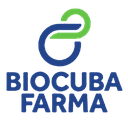Executive Secretary

VIII International Symposium on Chemistry and Pharmaceutical Sciences
SIPN
4th International Symposium "Chemistry of natural products”
Abstract
Skin cancer is the most diagnosed type of cancer worldwide. It is more prevalent in tropical countries, and is directly associated with prolonged exposure to the high incidence of ultraviolet radiation in the area. Conventional treatments are associated with multiple side effects; Prevention remains an effective and economical method. Medicinal plants are currently being investigated as possible sources of bioactive compounds. Plants of the genus Serjania (Sapindaceae) are used to treat a variety of ailments and studies have confirmed beneficial properties. Serjania subdentata Juss. ex. Radlk is a species found in the Cuban archipelago of which there are very few previous studies. In the present study, the photoprotection capacity of hydroalcoholic extracts of stem, leaves and fruits of Serjania subdentata was evaluated using ex vivo DNA as a biological model. As a prerequisite, the clastogenicity of the extracts was evaluated in plasmid DNA ex vivo, their absorbance in the UV spectrum was determined and their SPF was calculated. The photoprotective capacity of the extracts was measured by UVB exposure assays on ex vivo plasmid DNA. The extracts were not clastogenic in plasmid DNA at a concentration of 1 mg/mL and incubation times of 4 hours. These present their best absorbance in the UV spectrum in the UVC range. They perform demutagenic action against UVB radiation at a concentration of 1 mg/mL. This study provides a first approximation to the photoprotective capacity of the total hydroalcoholic extracts of Serjania subdentata Juss. ex. Radlk.
Resumen
El cáncer de piel constituye el tipo de cáncer más diagnosticado a nivel mundial. Es más prevalente en países tropicales, y está directamente asociado con la exposición prolongada a la alta incidencia de radiaciones ultravioletas en el área. Los tratamientos convencionales están asociados a múltiples efectos secundarios; la prevención sigue siendo un método efectivo y económico. Actualmente se investigan plantas medicinales como fuentes de compuestos bioactivos. Las plantas del género Serjania (Sapindaceae) son empleadas para tratar disímiles dolencias y estudios han confirmado propiedades beneficiosas. Serjania subdentata Juss. ex. Radlk se encuentra en el archipiélago cubano de la cual existen muy pocos estudios previos. En el presente estudio se evaluó la capacidad de fotoprotección de extractos hidroalcohólicos de tallo, hojas y frutos de Serjania subdentata usando como modelo biológico ADN ex vivo. Como requisito previo se evaluó la clastogenicidad de los extractos en ADN plasmídico ex vivo, se determinó su absorbancia en el espectro UV y se calculó su SPF. Se midió la capacidad fotoprotectora de los extractos mediante ensayos de exposición a UVB en ADN plasmídico ex vivo. Los extractos no resultaron clastogénicos en ADN plasmídico a la concentración de 1 mg/mL y tiempos de incubación de 4 horas. Estos presentan su mejor absorbancia en el espectro UV en el rango de UVC. Realizan acción desmutagénica frente a la radiación UVB a la concentración de 1 mg/mL. Este estudio brinda una primera aproximación a la capacidad fotoprotectora de los extractos hidroalcohólicos totales de Serjania subdentata Juss. ex. Radlk.
About The Speaker

Claudia Rodríguez Hernández

Discussion




